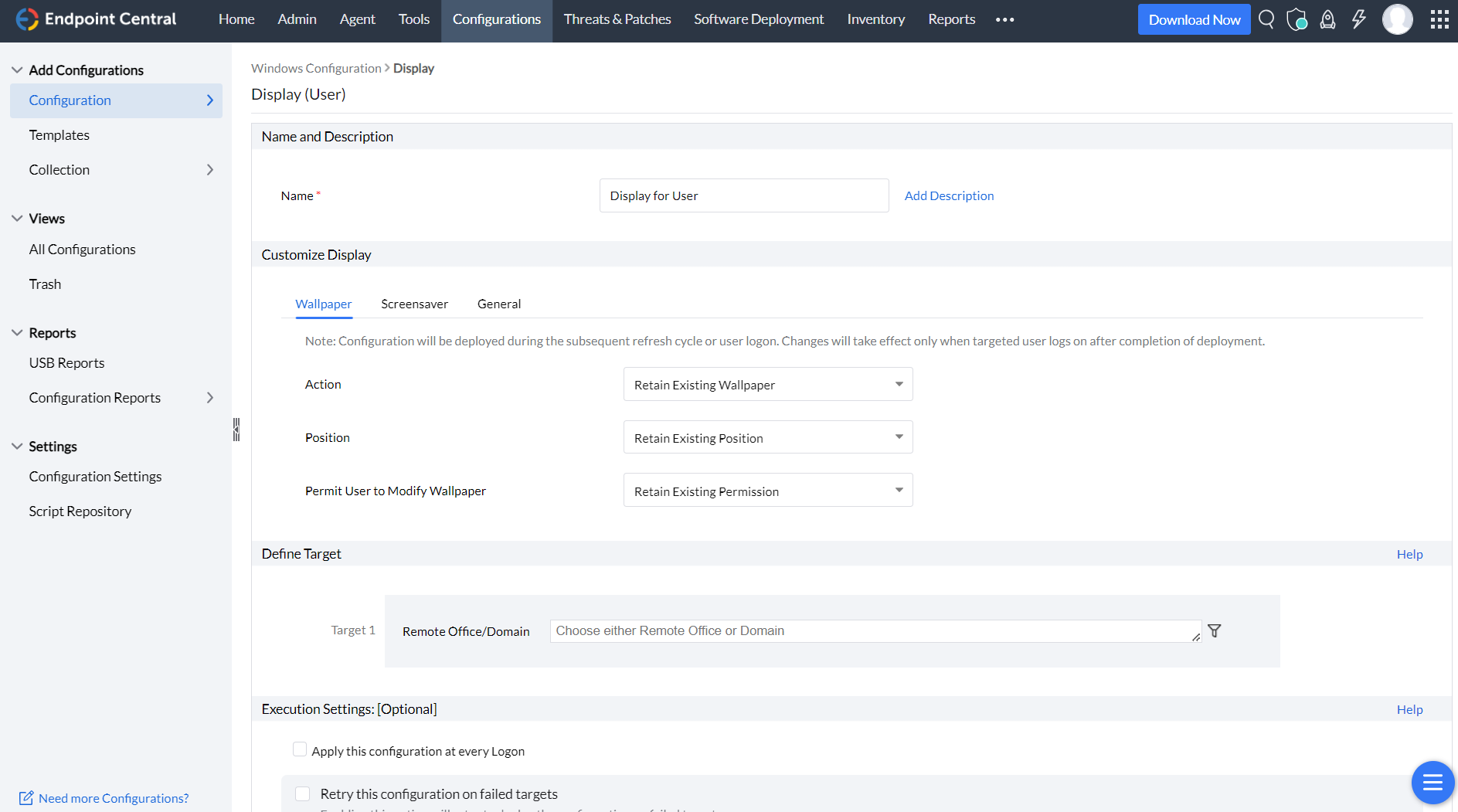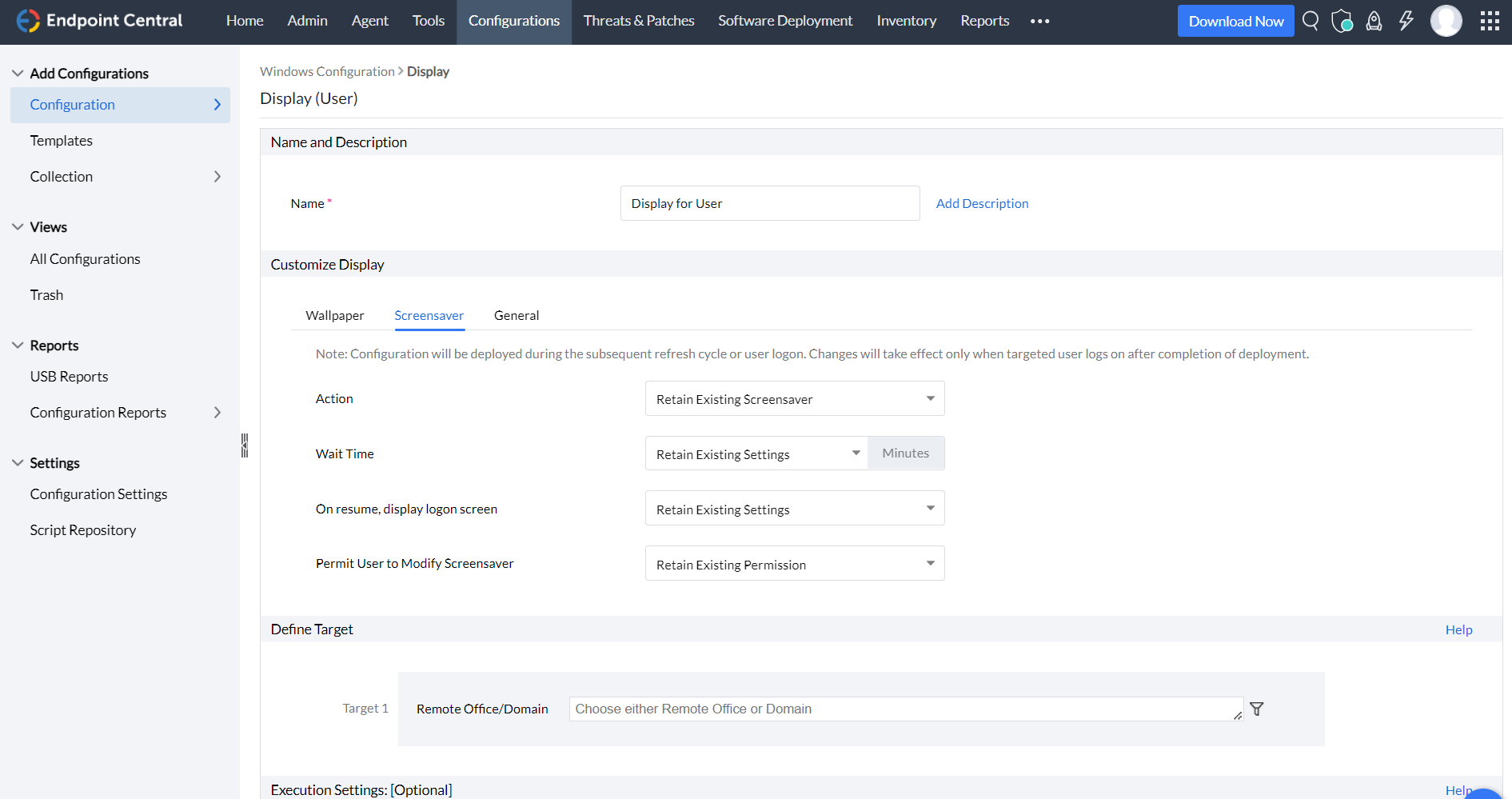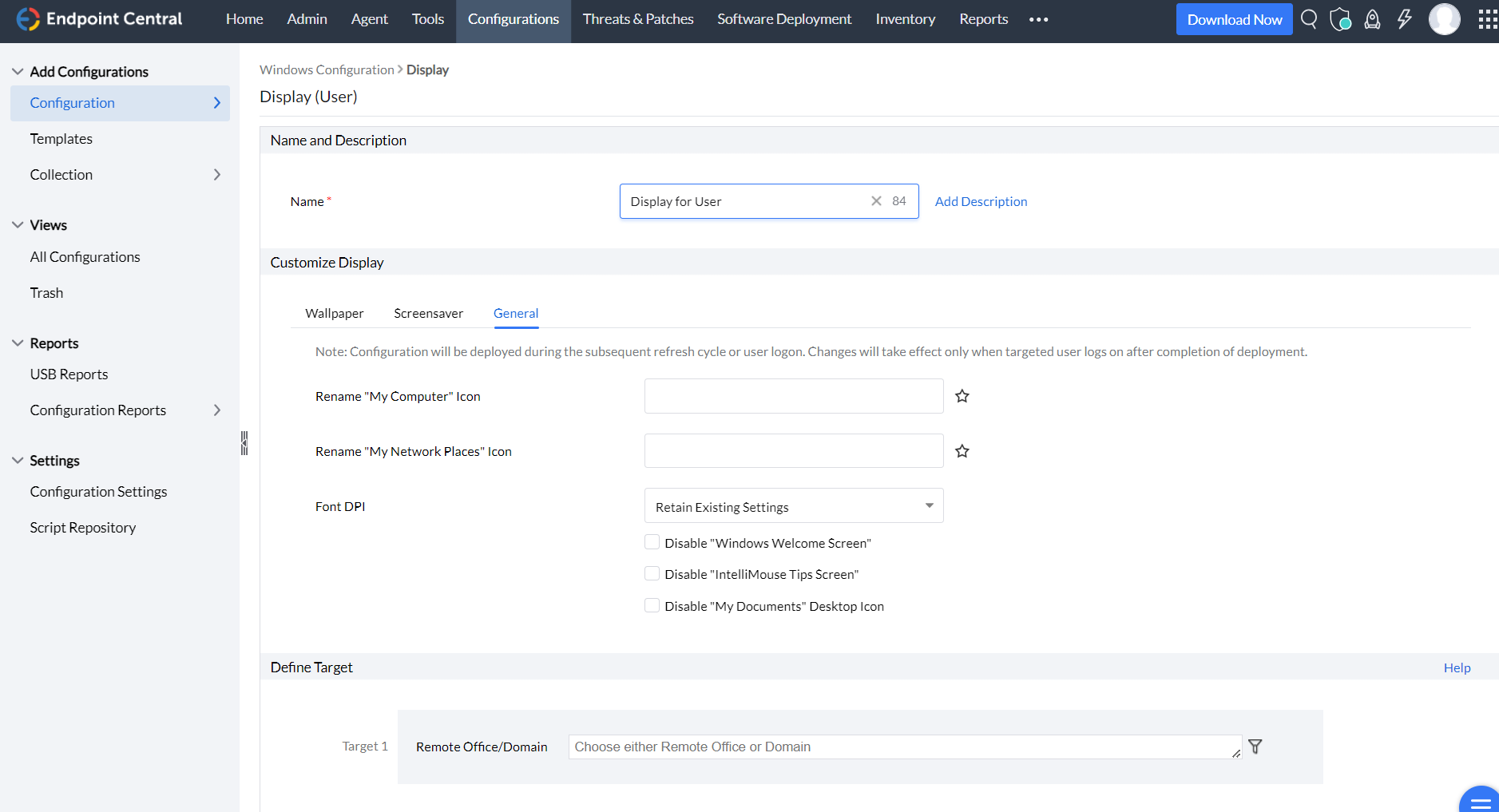Display Configuration for Users
Table of Contents
What is a display configuration?
Display configuration in Endpoint Central helps in the management and customization of display settings on endpoint devices such as desktops, laptops, and monitors. It allows organizations to define and enforce specific display configurations across all the endpoints in the same network, thereby ensuring consistency, security, and optimal user experience. You can configure the display settings for users to customize the wallpaper, screen saver, and general settings like the DPI settings for font and renaming icons.
To configure the display settings for users, follow the steps given below:
- In the Endpoint Central console, navigate to Configurations tab > Configuration > Windows > Display User Configuration
- Enter the name and description for the configuration
- In the Customize Display criteria, you can customize the settings for wallpaper, screen saver, and configure some general settings.
- To customize the settings for wallpaper:
- Select Action: Choose whether you want to retain, disable, or upload a new wallpaper.
- Select Position: Choose the position settings for your wallpaper.
- Configure the settings to permit users to modify wallpapers as per your requirement.

- To customize the settings for screen saver:
- Choose Action: Choose whether you want to retain, disable, or upload a new screen saver.
- Select the Wait Time.
- Choose whether you want to show or not show the logon screen during resume.
- Configure permit users to modify the screen saver as per your requirement.

- To customize the general settings:
- Configure the settings to rename My Computer Icon.
- Configure the settings to rename My Network Places Icon.
- Customize the Font DPI settings.
- If you want to disable Windows Welcome Screen , IntelliMouse Tips Screen, and My Document Desktop Icon, select the disable options as required.

- Define the target users.
- You can enable the option to retry the configuration on failed target users if required.
- Select the option to enable notifications if you want to receive notifications via mail.
- Click Deploy to deploy the configuration on all the target users.
- Click Save As to save the configuration as a draft.




